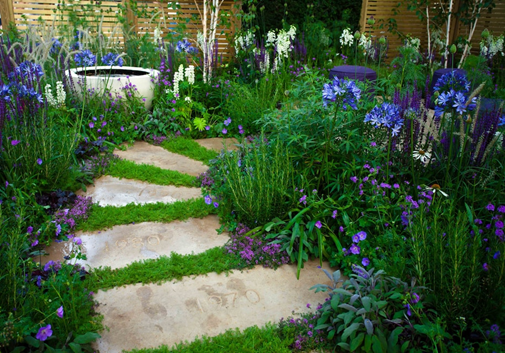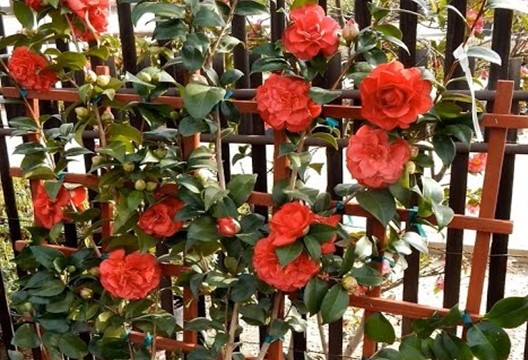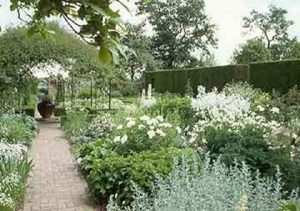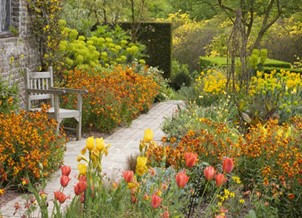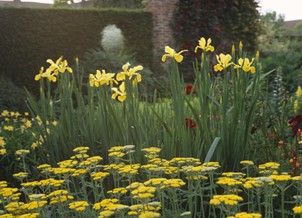Garden Design
10 Ideas on
How to make a BIG Splash with a Small Garden
When it comes to creating a beautiful garden, size doesn’t matter. You can make big dreams happen in a small space with the right plant choices, artful design and just a little creativity. Here are three expert ideas on how you can transform a smallish backyard, a mini-garden or a strip of side yard into an expansive-feeling area blossoming with big vibes. Here are their suggestions…
- Forge a Path…
A winding path adds mystery
If you have a yard that is at least 10 by 10 feet, lay a stone pathway between a couple of the zones you created, perhaps between the lawn chair where you lounge in the sun and a birdbath or between the patio and your herb garden. The path doesn’t have to be anything fancy; simply place stone or concrete pavers in shallowly dug depressions in the ground. Avoid straight paths, because they will shrink the space from a visual perspective. Instead, build curving pathways. They make short distances seem like a little bit of a longer walk, which gives the illusion of size. Hiding the end of the path creates mystery about what lays ahead…
- Present a unified front…
Variety is not always the way to go. Having a collection of random pots in different colors, sizes and shapes is the quickest way to confuse the eye and make a garden seem smaller. Choose containers with the same color and style to keep the focus on the plants, allowing them to provide pleasing contrasts with their colors, textures and shapes.
3. Less is more…
The biggest mistake people make is trying to grow one of everything. The resulting clutter will make a garden feel more constricted. To create a sense of harmony, select a smaller number of plants, say up to a half-dozen, and grow enough of each one to fill the beds. The patches of plants will give a place for the eye to rest, so viewers can experience each type of plant on a deeper level.
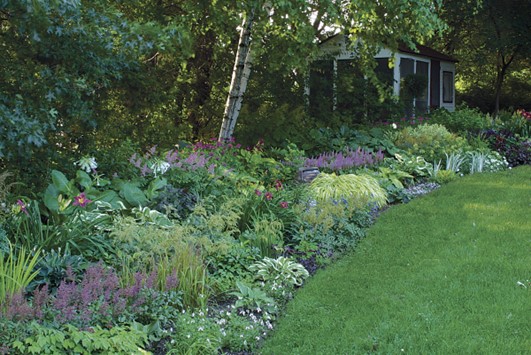 Repetition makes a garden ‘sing’
Repetition makes a garden ‘sing’
- Go vertical…
Designers recommend that if you have limited linear space, grow up. Add plants that pull the eye up. There are plenty of edible plants that are vining or that can be trellised, such as Camellias. You can purchase a more upscale metal climbing structure, or simply lean two pieces of bamboo together and tie them at the top to secure them. Alternately, there are decorative vines that can adhere to walls, such as star jasmine, evergreen clematis and royal trumpet vine. You can also add other vertical elements, such as hanging baskets, plant stands, window boxes and containers that attach to a wall, railing or deck.
Camellia, Trellised
- Build layers…
Create a layered effect by choosing plants with differing textures, complementary colors and varying heights.
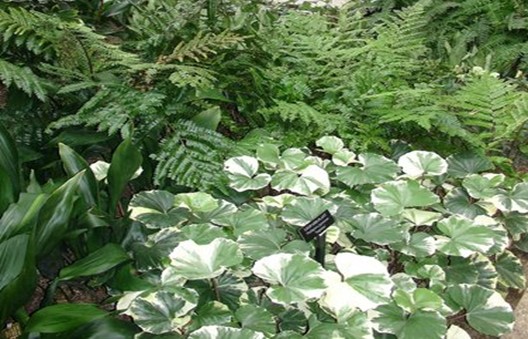 A variety of textures … Fern, Leopard plant and Cast iron plant
A variety of textures … Fern, Leopard plant and Cast iron plant
This adds variety, preventing you from having a space where a bunch of similar plants drown each other out. Use different leaf shapes. This will create nice contrasts while breaking things up.”
- Get reflective…
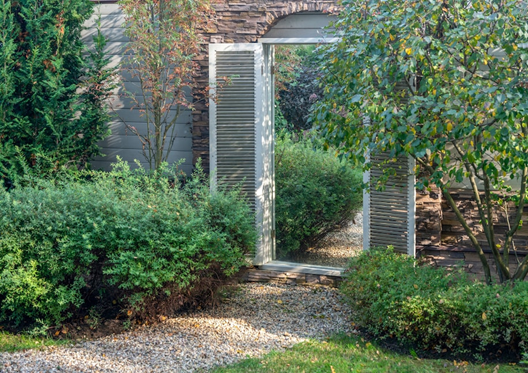 Tricking the eye into thinking there’s additional room.
Tricking the eye into thinking there’s additional room.
Garden mirrors are a great tool for reflecting sunlight and if positioned cleverly, can help to create the illusion that your small garden is bigger. An illusion mirror can create dramatic effects such as appearing to be a garden gate in a wall or hedge, or even a window. Whichever design you choose, an outdoor mirror is a transformative accessory not to be overlooked. But there are a few things to consider. What will it be reflecting? Don’t place your mirror opposite a wall with drain pipes or air ducts, but reflect the leafy interest in your garden instead. Using a full length mirror will help to create the illusion of a garden beyond.
- Try a little water…
There might not be room to put in a swimming pool or an in-ground pond, but even the tiniest yard can have a water feature. Consider adding a small aboveground pond ringed with rocks to hide the sides or a standing birdbath. The water reflects the sky and greenery above it, adding another dimension to the space and making it feel larger. Many people spend a lot of money on specialty bird food to attract a specific species, without realizing that a water dripper will indiscriminately attract just about any bird. Birds love to drink clean water and love to bathe on a hot Low Country day. Try it. You will be surprised at the variety of species you will attract… (see BirdChoice Water Drippers).
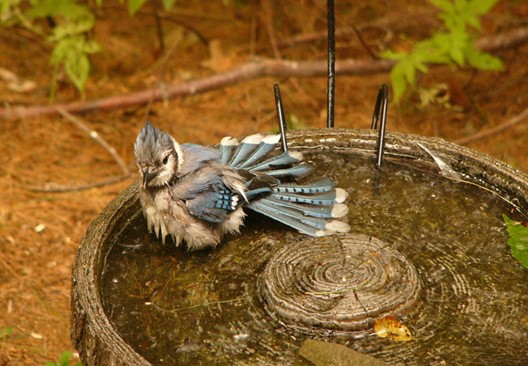 A water dripper is a ‘Bird Magnet’
A water dripper is a ‘Bird Magnet’
- Think in terms of Garden “Rooms”…
What is a Garden Room? Garden rooms are distinct areas that are designated for
particular functions, whether it’s dining, cooking, lounging, or meditating. They can also
delineate different planting color schemes. They are defined by barriers such as fencing
or hedging, or structures such as trellis or pergola that create intimacy and privacy.
Pathways or transition areas are used to connect the different spaces.
Creating separate, smaller spaces can actually make a yard feel larger. Much like the interior of a home, outdoor rooms can be highly personalized and embellished with touches such as customized hardscaping, hand-selected furniture, statuary and plants. These rooms can be as simple as a small bench surrounded by plants, or as elaborate as a full outdoor kitchen.
One of the most famous gardens incorporating ‘garden rooms’ is the Sissinghurst Castle Garden, in England, created by Vita Sackville-West. Her white garden room (above) is world famous.
Garden room landscaping is an individual process, with each situation unique and no hard and fast rules.
- Create a living fence…
To demarcate these zones, try using living fences that double as edible landscape. Plants small fruit trees (such as apples or pears) supported on an espalier system — small trellises that force trees to grow flat in two dimensions — interspersed with blueberry bushes and strawberry plants. This creates a three-layer barrier, with the trees growing to five or six feet tall, the bushes maxing out at two to three feet high, and the strawberries spreading at ground level. For a more restful, dark green backdrop that makes flower colors ‘pop’, try Podocarpus.
After all, living fences are allowed in HHP…
###
Jacqueline Emery





